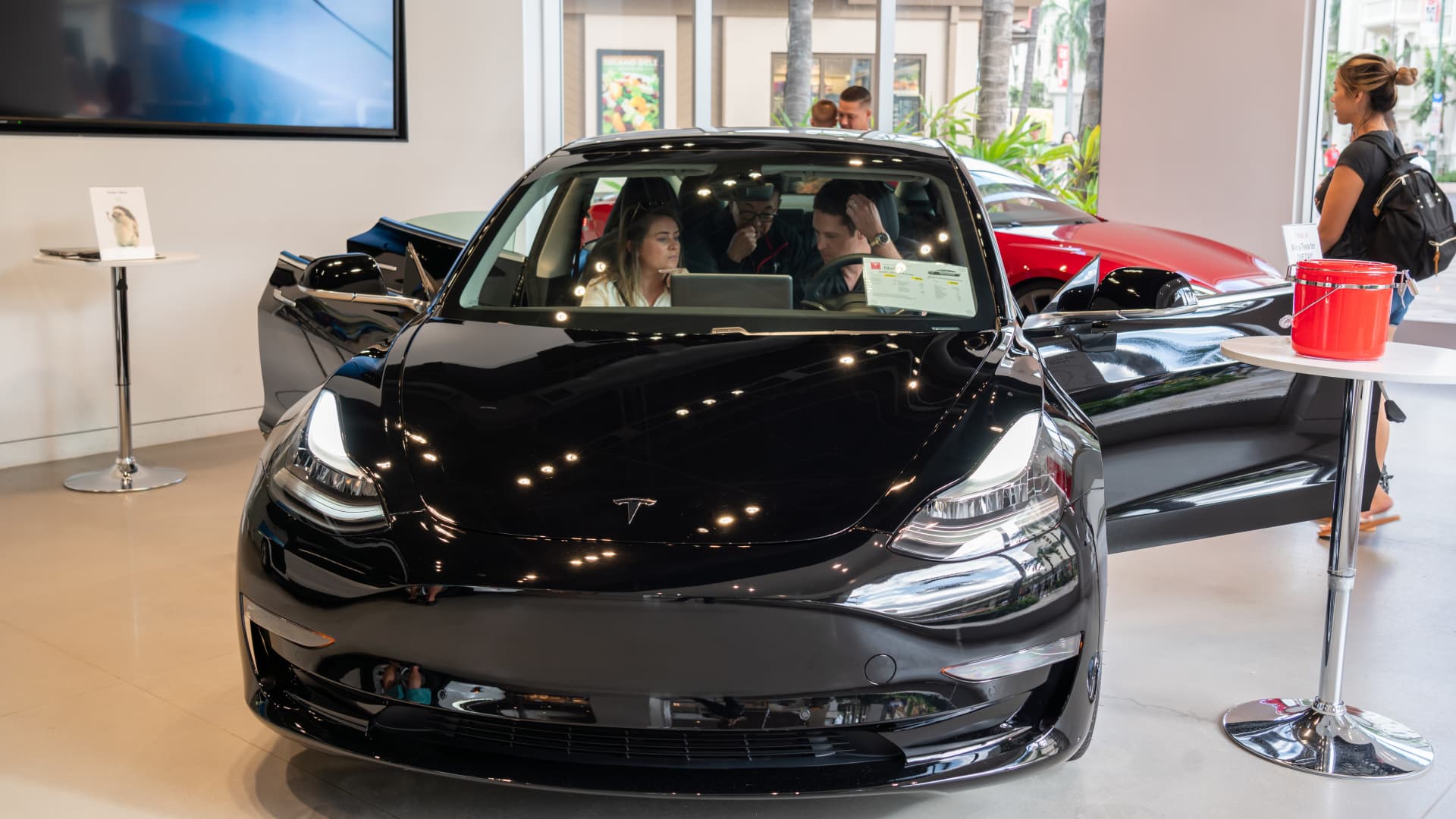Products You May Like
U.S. consumers have been making the move to all-electric vehicles more slowly than many expected — but a growing leader in EV adoption is Hawaii.
The tropical island state this year ranks fifth in overall EV adoption at 11.9% of new retail vehicles sold through February, according to J.D. Power.
Hawaii also ranks third – behind only California (46.1) and Washington (37) – in J.D. Power’s “EV Adoption Score,” which is weighted based on market, consumer preference and EV availability, among other conditions, with a score of 33.8.
“We measure adoption relative to availability, meaning shoppers need availability of EVs that meet their needs … before they can even consider adopting,” said Elizabeth Krear, vice president of the electric vehicle practice at J.D. Power. “In California, the quantity of EVs is much higher than in Hawaii. But when consumers are given a viable option, 33% are choosing to buy the EV.”
Hawaii also is the top state for EV adoption that hasn’t agreed to the California Air Resources Board’s Zero-Emission Vehicle program, according to J.D. Power. Those rules promote EVs and include stricter vehicle emissions and miles per gallon standards for traditional vehicles in places that have adopted the measure, including the other top five states: California, Washington, Oregon and Colorado.
Why Hawaii?
What’s going on in Hawaii that’s leading to more consumers opting for EVs? It’s a mix of things but mainly high fuel costs, the availability of renewable energy for charging and culture, according to Ivan Drury, director of insights at auto research firm Edmunds, who lives in Waikiki on Hawaii’s Oahu Island.
“There is a higher sense of responsibility towards stewarding the land versus most mainland states. If you look up ‘Aina’ in Hawaiian, you see what I mean, lots of pride for the land,” he said.
Drury also said the popularity of hybrid models in the state (at 19% in 2023) has helped in the switch to EVs, and road trip concerns – a hurdle for some buyers in the U.S. – aren’t really a problem in Hawaii.
“We’re on an island. No one is really worried about road trips unless they live on the Big Island,” he said. (For reference, the “Hawaii Belt” around the Big Island, or Hawaii Island, is only about 260 miles.)
Gasoline prices also play a factor, as they do in other states, such as California. The average price for a gallon of gas in Hawaii is about $4.72, according to AAA. That’s the highest in the U.S. other than California and $1.10 higher than the national average of $3.62 a gallon.
J.D. Power reports the top-selling EVs in the state are the Tesla Model Y, Tesla Model 3 and Ford F-150 Lightning.
“I’m really happy. I like the car. I like not buying gas,” said Scott Sageman, a 2021 Tesla Model 3 owner who has lived on Hawaii’s Big Island since moving from California in 2020.
Russell Wong, regional vice president of Aloha Kia’s seven stores in Hawaii, said customer interest in EVs continues to grow but the vehicles still remain only about 2% of the stores’ sales.
“While it is a significant percentage of our current sales compared to other dealers or other markets, it’s still a very, very small percentage,” he said. “We do see that continuing to climb.”
Wong said there’s been a lot of interest in Kia’s new EV9 SUV that’s just arriving to dealerships. The current top-selling EV at the Kia dealerships is the Niro, which also is Kia’s least expensive all-electric vehicle, and Aloha Kia has priced it starting at about $36,000.
EV concerns
Although Hawaii is embracing electric vehicles more than some of its peers, it still has many of the same problems with EV adoption that the U.S. mainland does, including lack of charging infrastructure, affordability and a dearth of vehicle choices.
A Gallup poll released Monday found less than half of U.S. adults, 44%, say they are either “seriously considering or might consider” buying an EV, which is down from 55% in 2023. The proportion not intending to buy an EV has increased from 41% to 48%.
Sageman, who lives on the slope of a volcano, said he has not experienced problems charging, as he does so at home, but the estimated range of his Model 3 can be less than expected due to the state’s hilly terrain.
“The one thing that I’ve noticed is you do not pay too much attention to the estimated range,” he said. “You’re not going to get the same amount if you’re doing a lot of uphill driving.”
The average cost to a consumer buying an EV from a franchised dealer (excluding Tesla, Rivian and other direst-to-consumer brands) in Hawaii this year is more than $62,600, according to Edmunds. That’s down from more than $68,500 last year and roughly $12,700 over the average price of a vehicle in Hawaii.
High prices are a national and Hawaiian trend. Upper-income Americans across the country are the subgroup most likely to own an EV, with 14% doing so, up from 6% last year, according to the Gallup report.
“We’re sort of at the extreme ends of adoption,” Drury said. “For those in a position to take advantage of an EV, it works, sold. For those that it doesn’t, it won’t, for a very long time. Overcoming the obstacles of infrastructure and high costs of living aren’t something that can be taken care of overnight or even within a few years.”
